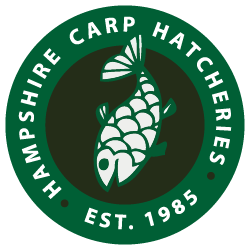Shubunkins or shubs are a particular variety of the common goldfish. Out of the dozens of varieties that are farmed around the world, shubs are the most common as they are regarded as hardy. A hardy variety means it can survive in a garden pond outside in a European winter. The more fancy varieties such as moors and lionheads need to be kept inside in aquaria.
Breeding and quality
Shubunkins tend to be more expensive than goldfish as they are more difficult to produce. Like the standard goldfish, shubs are born brown and then when the fish reaches approximately 1 inch in length it starts to lay down colour. This does not occur in all specimens as some are genetically disposed to remain brown, and others loose much of their colour pigment and stay completely pink. We only select the calicos to ongrow.
The shubunkins we sell are generally from 2 - 6 inch inches in length. After a year their fins will really start to grow and develop, the colours will intensify and you will have acquired a truely spectacular fish for both an aquarium or a pond
Colours and patterns
Shubs originated in Japan where they were selectively bred over 100 years ago. They have a range of colours which are described as calico but what makes them of particular interest is their scales. They possess several scale types including plain, metallic and transparent.
These scales are known as nacreous. The gill cover is often covered by the transparent scales which ensure that the actual gill filaments are visible beneath. The overall effect is a unique multi-coloured fish frequently with long flowing fins, truly a beautiful ornamental fish.
Within this array of uniquely coloured fish there are some distinct varieties. The most common is the Bristol shubunkin which tends to be predominantly blue. Another common variety is American which is more calico with some patches of deep red.



